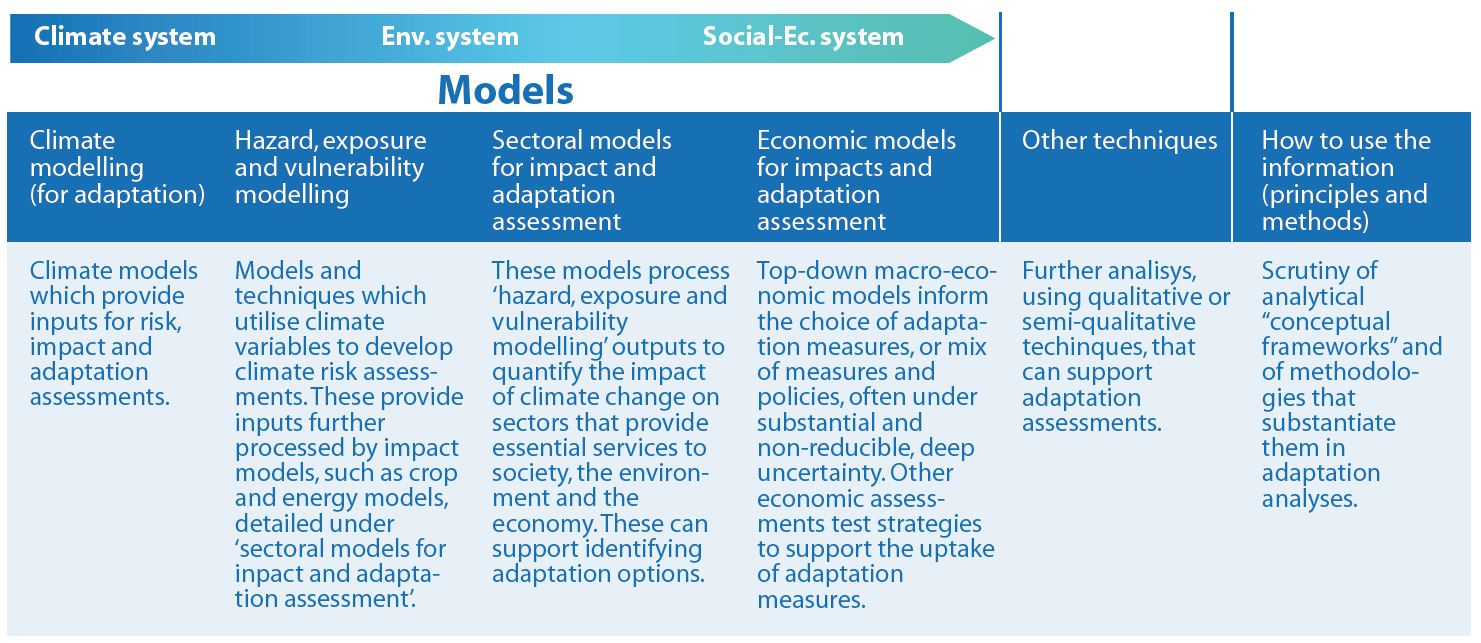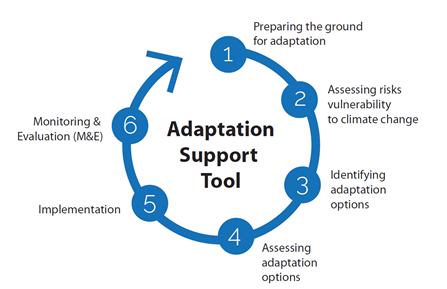As climate change increasingly threatens our wellbeing, economic and social development, we cannot stand idly by and watch. Ignoring the intensifying of extreme events, sea levels advancing and eating up coastlines, temperatures becoming unsustainable in cities, and ever more water scarcity and lower crop yields is no longer an option.
On top of limiting global warming through decarbonization and mitigation actions, humans must also adapt and develop resilience to the unavoidable impacts of climate change that are already happening. Inaction will only serve to multiply future costs.
The central message of the latest report of the Intergovernmental Panel on Climate Change (IPCC) “Climate Change 2022: Impacts, Adaptation and Vulnerability” is clear. It is time to adapt, at all levels of society. It is necessary and acknowledged not only in scientific papers but across the board.
At a policy level this process of recognition is both global, in multilateral frameworks such as the Paris Agreement, the Glasgow Climate Pact, the Sendai Framework for Disaster Risk Reduction 2015-2030, and the 2030 Agenda for Sustainable Development, and specifically European – in the new EU Strategy on Adaptation to Climate Change (2021) and in the 2016 Global Strategy for the EU’s foreign and security policy. Not to mention the countless national and local policy documents, plans and strategies.
The key issue for decision-makers at the helm of nations, cities, even companies, who must act in concrete, now becomes quite simply: how?
The research-policy gap on climate change adaptation
According to the IPCC, adaptation is “the process of adjusting to actual or expected climate and its effects”. Policymakers that are required to make decisions to “adjust” the territories of their competence to climate impacts may find themselves disoriented by the wide variety of models, methods and tools offered by the scientific community to face the many facets of the climate adaptation challenge.

“Modelling tools for climate adaptation are concatenated,” explains Prof. Francesco Bosello, director of the Economic analysis of Climate Impacts and Policy Division at the CMCC Foundation, Associated Professor at Ca’Foscari University of Venice and co-director of the European Institute on Economics and the Environment (EIEE).
“Today, there are many models and tools available to address the different phases of environmental and socio-economic assessment of climate change impacts and adaptation analysis. First, you need to assess the climate risk, which depends not only on the climate hazard that triggers it, but also on the exposure, the sensitivity, and the adaptive capacity of the socioeconomic systems that are hit by the hazard. Afterwards, you enter in the phase of assessing and implementing the best adaptation options.”
There is a gap between adaptation science and modelling and the possibility to effectively access and exploit the information produced by policy making at different levels: international, national and local
Paola Mercogliano, CMCC Foundation
There are models and techniques to assess climate risks. Their results feed into models that can quantify the impacts of climate change at a sectoral level. Based on the information taken from them, the choice of adaptation measures and policies in specific contexts can be informed by economic models or other qualitative techniques, the latter of which is applied especially when there is a lack of data.

climate adaptation strategies. Source: Study on Climate Adaptation Modelling – Comprehensive desk review, p. 8
“The problem today is that decision-makers have no idea where to start in addressing the adaptation process” says Dr. Paola Mercogliano, Director of the Regional Models and geo-Hydrological Impacts at the CMCC Foundation. “There is a lot of literature on the topic, but there is a gap between adaptation science and modelling and the possibility to effectively access and exploit the information produced by policy making at different levels: international, national and local. Policymakers ask: Where can we find this information? Which model should we use? How can we implement proper adaptation? The world of policy needs concrete and practical answers, and it is our responsibility to give them access to information, so that our research on climate change adaptation can really make a difference.”
The 5 steps of adaptation
Since the aim of the new EU Strategy on Adaptation to Climate Change is to accelerate action, it becomes crucial to focus on developing solutions and to move from planning actions to their implementation.
“Adaptation actions must be informed by robust data and risk assessment tools that are available to all—from families buying, building, and renovating homes to businesses in coastal regions or farmers planning their crops,” reads DG Clima in the introduction of the open access book Climate Adaptation Modelling, recently published by Springer Climate.
The book, which was downloaded 27,000 times in the first month after its release – indicating the high volume of interest in the topic – presents the results of a Study on Adaptation Modelling commissioned by the European Commission’s DG CLIMA to a group of international scientists coordinated by the CMCC Foundation and hosts the experiences of the main EU experts on climate adaptation modelling.
According to the Adaptation Support Tool, developed by the European Climate Adaptation Platform (CLIMATE-ADAPT) to assist policy makers, climate adaptation happens in 5 steps:
- Preparing the ground for adaptation
- Assessing climate change risks and vulnerabilities
- Identifying adaptation options
- Assessing adaptation options
- Implementing Adaptation
- Monitoring and Evaluating Adaptation.

“Our analysis shows that the last stages of the adaptation process are currently the weakest” clarifies Bosello, coordinator of the Study on Adaptation Modelling. “While there are several databases and models that allow us to assess the climate risks in order to understand where to intervene, the phases of assessment, implementation, and monitoring of adaptation options are less supported. They depend on many variables and actors, and it is hard to produce decision support systems capable of giving quick and operational insights needed by decision-makers at these levels.”
Rapid Analysis for climate adaptation
“We refer to ‘Rapid Analysis’ as the adaptation assessments conducted in a relatively short time frame, using open data sources – such as Copernicus, the European Union’s Earth observation programme – and open softwares,” continues Bosello. “They provide non-detailed information that can offer an initial assessment for adaptation, which is useful before setting up more complex modelling or customised and detailed analyses.”
In short, rapid analysis is very useful at a macro level, to get preliminary information on the adaptation process through methodologies that allow for simple assessment. It enables us to answer questions such as what are the adaptation priorities for Italy or Europe for specific risks and how to assess them at those levels. For example, understanding forest fire vulnerability, how to calculate heat stress or how to visualize coastal flood risks.
The tools required to answer these questions exist, and policymakers now have access to a review of those available through the Study on Adaptation Modelling, which also provides guidelines and hands-on tutorials on how to use the available tools to navigate the world of adaptation platforms currently available.
However, as it often uses simplification, rapid analysis cannot be applied at all decision-making contexts, particularly when specific adaptation actions and measures are needed for a specific place: in those cases, detailed information on the context, stakeholders’ engagement, high resolution data and specific technical support are needed.
📖 “Climate Adaptation Modelling” presents the results of a study on adaptation modelling commissioned by the European Commission’s DG CLIMA, and exhibits detailed overviews of models and tools for adaptation assessment.
👉 Download it now: https://t.co/hi5MZvsE2Y pic.twitter.com/kTrlnp64YQ— Fondazione Cmcc (@CmccClimate) February 10, 2022
Time to adapt. So, what now?
“The output of our analysis offers new and useful instruments to decision makers,” continues Mercogliano. “We explain how to go through the five steps of the Adaptation Support Tool. We classify and describe methods and tools available today for adaptation assessment. If their field of interest is part of the use cases for which rapid analysis can be applied, they will find case studies that can guide them.”
And for those who are not part of the cases for which a rapid analysis can be developed? “Beyond these applications, policymakers, stakeholders and adaptation experts must meet and work together,” explains Mercogliano.
“To identify the best possible solutions for adaptation at a local level, we need to know the territory, the context, the people. A top-down approach, in which experts propose solutions without knowing the context in which they are operating, cannot work: we must implement solutions that are welcomed by the local community and are coherent with the cultural background. Only when we have a clear understanding of the context, of the most vulnerable areas and sectors, of the perception of change, we conduct climate analyses. And, based on these, we propose possible solutions, which are discussed with decision-makers in terms of their feasibility, their costs, and their acceptability by the community. This is how the process starts.”
A final briefing of the Study on Adaptation Modelling is taking place on 18 March, 2022.






